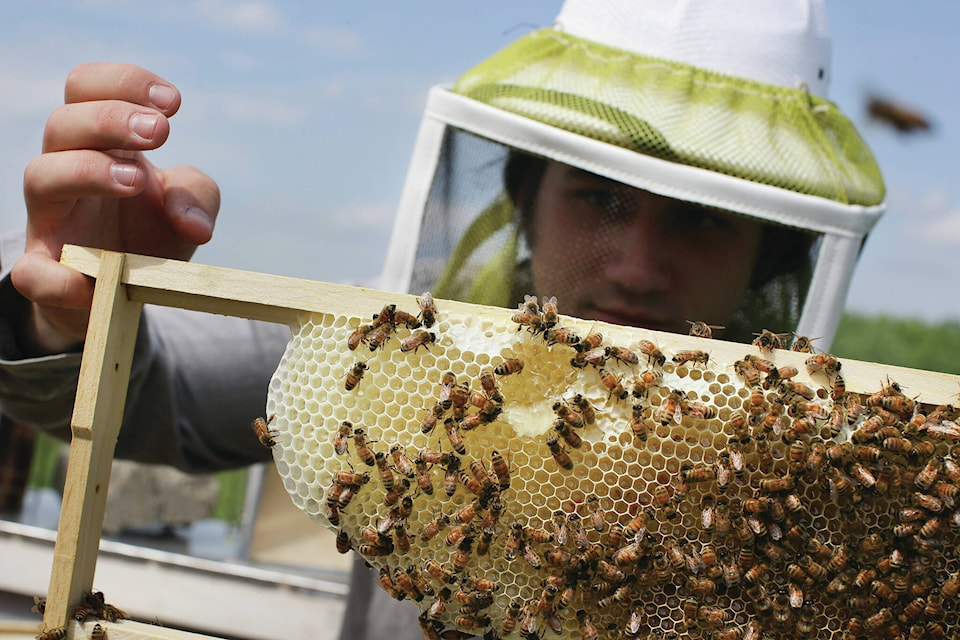One Central Alberta beekeeper has lost 70 per cent of his hives due to an external parasite.
Varroa mites, which feed on bee bodies and vector viruses, have been a concern for honey bees across the province this year, said Jeremy Olthof, who owns Tees Bees in Lacombe County and is the president of the Alberta Beekeepers Commission.
“It seems that over last few years, those virus loads have sort of built up,” said Olthof.
The Government of Alberta describes the varroa mites as a “very serious pest” of beekeeping. Infestations can cause irreversible damage to honey bee colonies and colony death. Colonies collapsing from these mites can easily spread the parasite to other colonies.
The bees will generally get through the viruses if you can keep the mite loads down, Olthof said. There are methods bee keepers test for varroa mites, including using a hand shaker with fluid.
“But if the mites are hiding in the brood, which is where the reproduce, it can sort of trick you when you’re testing,” Olthof said.
“We’ve been fighting this might for 20 years already and we’ve seen these waves up and down. The last time we saw huge losses like this was when our last main (chemical) product stopped working and there was a bit of a gap before we got Apivar, which is the one we’re currently using.”
Olthof said “the worry is that (the mites) are developing resistance.”
Stettler-area beekeeper Ron Greidanus said last year’s hot, dry summer set the stage for an increased number of varroa mites.
“Bees love hot dry weather. The bees did very well last year, but when the bees do well, the parasites that feed off them also do well,” said Greidanus, who has been around bees since 1974 and has run Greidanus Honey Bee Farm since 1998.
“When those parasites do well, they venture in all kinds of viruses and pathogens into the hive. You can get ahead of the varroa mites, but that doesn’t necessarily mean that you’ve gotten over the pathogens that cause the disease in the hive. It takes a while for them to get better.”
The methodology to combat the mites is “extremely limited,” said Greidanus.
Despite extensive efforts to get ahead of the viruses last fall, so this spring, the honey bee farm still had a 35-40 per cent loss.
“It took a long time to get ahead of the varroa mites, but there wasn’t enough time to get ahead of the viruses and pathogens that had developed,” he explained.
“That’s what’s resulted in significant winter losses throughout the province this spring. Of the 312,000 hives that were registered (in Alberta), more than 165,000 were dead this spring and probably only two-thirds of those are going to be repopulated this year. Our provincial hive count is going to go down big time.”
Greidanus said beekeeping is a small industry and if the federal government wanted to help the industry, they would “expedite and assist” in getting new miticides on the marketplace so beekeepers can stay ahead of the parasites.
“They’re never going to go away. They’re endemic to Canada – they’re pretty much endemic around the world. If you don’t stay on top of it, they’ll kill hives,” he said.
sean.mcintosh@reddeeradvocate.com
Like us on Facebook and follow us on Twitter
